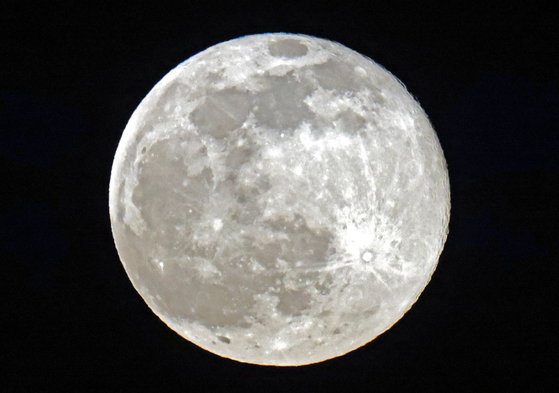Researchers in the United States have proposed a modern-day “Noah’s Ark” project to store 6.7 million samples of seeds on Earth in preparation for the destruction of the Earth.
According to the Japanese version of CNN on the 17th, a research team at the University of Arizona in the United States introduced a plan called’global insurance’.
This project is to freeze and preserve the seeds of life on Earth, such as seeds, and store them in a cave on the moon. The intention is to preserve genetic material even when biodiversity is greatly reduced or when the day of Earth’s destruction comes.
![The'Noah's Ark' project was proposed to store 6.7 million seeds per month. [AFP=연합뉴스]](https://i0.wp.com/pds.joins.com/news/component/htmlphoto_mmdata/202103/19/e2ba8e4b-99a7-471e-bd6e-63bda71a08ff.jpg?w=560&ssl=1)
The’Noah’s Ark’ project was proposed to store 6.7 million seeds per month. [AFP=연합뉴스]
Researchers such as Jekan Tanga, a professor of aerospace and mechanical engineering at Arizona Institute of Technology, proposed the idea of a’space seed storage’ in a paper published earlier this month, saying, “If biodiversity collapses, it can cause a negative chain reaction.”
These seed reservoirs also exist on Earth.
![University of Arizona professor Zekan Tanga proposes to create a repository for Earth's seeds on the moon [사이언스 애리조나 홈페이지]](https://i0.wp.com/pds.joins.com/news/component/htmlphoto_mmdata/202103/19/b76f5def-2c5c-4e52-9484-0b72c756e651.jpg?w=560&ssl=1)
University of Arizona professor Zekan Tanga proposes to create a repository for Earth’s seeds on the moon [사이언스 애리조나 홈페이지]
About 1 million seed samples are stored in the world’s seed storage, located between Northern Europe, Norway and the Arctic.
![The National Baekdudaegan Arboretum has stored the seeds of 10 species of plants native to Baekdudaegan in the Norwegian Arctic Svalbard Global Seed Bolt. The picture is a view of Svalbard Sidbolt. [연합뉴스]](https://i0.wp.com/pds.joins.com/news/component/htmlphoto_mmdata/202103/19/4a5ec284-42ce-48a9-909a-0ab92ba0c318.jpg?w=560&ssl=1)
The National Baekdudaegan Arboretum has stored the seeds of 10 species of plants native to Baekdudaegan in the Norwegian Arctic Svalbard Global Seed Bolt. The picture is a view of Svalbard Sidbolt. [연합뉴스]
The researchers explained that the key to the project to create a storage space in space is above all else.
![The National Baekdu-daegan Arboretum has revealed that the seeds of 10 species of plants that grow naturally in the Baekdu-daegan have been stored in the Norwegian Arctic Svalbard Global Seed Bolt. The photo shows wearing seeds. [연합뉴스]](https://i0.wp.com/pds.joins.com/news/component/htmlphoto_mmdata/202103/19/0eb56e8b-1786-4c39-b82f-f4097e5b47c1.jpg?w=560&ssl=1)
The National Baekdu-daegan Arboretum has revealed that the seeds of 10 species of plants that grow naturally in the Baekdu-daegan have been stored in the Norwegian Arctic Svalbard Global Seed Bolt. The photo shows wearing seeds. [연합뉴스]
CNN said, “Seeds must be cooled to -180 degrees and stem cells must be preserved to -195 degrees. The effect of weightlessness on seed preservation is not yet known,” CNN said.
![On March 3, a lunar sample collected by the Chinese lunar exploration program Changeo 5 and brought to Earth was unveiled in Beijing, China. [로이터=연합뉴스]](https://i0.wp.com/pds.joins.com/news/component/htmlphoto_mmdata/202103/19/dc60b10d-0cc7-430a-96d9-afd0aad74cce.jpg?w=560&ssl=1)
On March 3, a lunar sample collected by the Chinese lunar exploration program Changeo 5 and brought to Earth was unveiled in Beijing, China. [로이터=연합뉴스]
It is also necessary to secure space for storage.
On the moon, 200 underground lava caves were discovered in 2013. The research team predicts that the cave on the moon is about 100m in diameter and will be able to protect seeds from solar radiation, surface temperature fluctuations, and meteorites.
![A proposal has been made to build a repository for frozen seeds of the Earth on the moon. The idea is to have a storage facility underground and a solar panel and communication means on the ground. [애리조나대]](https://i0.wp.com/pds.joins.com/news/component/htmlphoto_mmdata/202103/19/cb14a4dc-f888-44ef-84d5-a2f90d95baaf.jpg?w=560&ssl=1)
A proposal has been made to build a repository for frozen seeds of the Earth on the moon. The idea is to have a storage facility underground and a solar panel and communication means on the ground. [애리조나대]
Solar energy is mentioned as an energy source for operating a frozen storage room.
However, there are many obstacles to overcome to make it a reality. CNN said, “The research team estimates that in order to take 50 samples of each of the 6.7 million species on the planet and transport them to the moon, it would have to fire 250 rockets.”
Nevertheless, the idea that scientists have come up with is a concern that the rate of collapse of biodiversity is accelerating due to severe global warming.
Last year, a research team at the Center for Biodiversity and Environment Research at University College London (UCL) in the UK predicted in a paper published in the scientific journal Nature that by 2100, 73% of all species will fall outside the temperature limits suitable for survival.
Reporter Seo Yujin [email protected]
![]()
